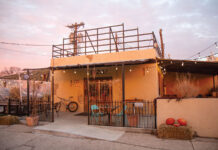It is now well established in the world of whiskey appreciation that a drop or two of water added to your glass can help your spirit to open up and allow its aromas and flavors to develop. Once popular as many an executive’s or politician’s go-to drink from the 1950s to the 1980s, the whiskey and soda have now fallen on hard times, and acceptance is still a ways off. The original mixer, soda or sparkling water is now seemingly reserved for use in Tom Collins and the like.
This straightforward drink deserves a second chance and an exploration of what it can add to your whiskey experience.
The history & a little bit of science
Although naturally occurring sparkling spring water existed beforehand, artificially produced sparkling water (also known as carbonated or seltzer water) dates back to the 18th Century, when Joseph Priestley discovered that you could “impregnate” water with “fixed air” to produce a pleasant tasting beverage.
It wasn’t long before others developed their own processes and products, including a certain Johann Jacob Schweppe, who devised his own machine to carbonate water, and soon, sparkling waters were available for sale.
In addition to the more obvious generation of bubbles, the carbonation process also turns the water slightly acidic, and Schweppe’s carbon dioxide came from chalk and sulphuric acid, which affected the taste. To correct for this, Schweppe added a little salt to his water. Nowadays, “club soda” (or “soda water” in the UK) still contains mineral compounds such as sodium bicarbonate, which also affect the acidity levels in the water. As a result, the wide range of sparkling waters and club soda available in the market today vary wildly in their pH levels and flavors.
Bubbles or no?
In order to determine the impact that adding sparkling water had on the whiskey, Smooth Ambler Old Scout whiskey was tasted in three ways: on its own at room temperature, with chilled still water and with chilled sparkling water.
Each was decidedly and understandably different. On its own, the whiskey was more viscous and, obviously, stronger, so it both stayed in the mouth longer and had more warmth. With a few drops of chilled water, the drink became very soft on the palate and lost some of that heat, but kept a complex texture to it, with heavier fruity notes such as cherries and other stone fruit coming through in particular. In contrast, with some sparkling water, the mouth-feel was silkier, aided by the introduction of bubbles, and lighter notes, such as pineapple, banana, and a distinct nuttiness were amplified.
The differences in the flavor profiles were quite fascinating and it would be interesting to try it with a wider range of whiskies.
Sparkling or club soda?
Another area for investigation was the decision of whether to use sparkling water or club soda. Three brands of sparkling water were each mixed with an equal volume of whiskey, a single large ice cube and no garnish.
Again, the differences were pronounced. The first example used the most acidic water of the range, at pH 4.9. It tasted much sweeter than the others and carried a lot of character and richer notes from the whiskey, but the bubbles dissipated quickly, leaving behind a nicely lengthened version of the original spirit. The second had a slightly higher pH level, but a much more intense fizz that lasted much longer than the others. The mineral flavor from the water itself was also stronger. The third water was slightly alkaline (pH 7.7) and its whiskey soda seemed less fizzy, but didn’t go completely flat like the first one; like the second, however, it left a cloying mineral aftertaste.
Next, club sodas were put under the spotlight; three were chosen from a variety of price ranges and were mixed in whiskey sodas just like the previous flight. Generally, the flavors of the underlying whiskey came through very well, although some brands were better than others and one example certainly had that dry, chalky note that lingered towards the end.
All of these drinks were more fizzy, definitely initially, than those made with sparkling water. The bubbles seemed smaller, but there were more of them. As the fizz dissipated, the profiles of the drinks also changed, opening up to dry, vanilla notes. The example that came out on top actually transformed after a minute or two, showing how much the drinks can change over the first few minutes. The drink made with Fever-Tree Soda Water lasted the best, keeping both its effervescence and clean whiskey notes well.
Conclusions
The above experiments were certainly a limited trial, but they revealed a few interesting points. Firstly, tasting whiskey with a dash or two of sparkling or soda water definitely added something to the whiskey drinking experience: rather than being “lost” in the sparkling or soda water, different notes were highlighted than when drinking neat or with ice or chilled water. Secondly, the notes that came through most and how the drink developed over time varied greatly between types and brands. Thirdly, and most importantly, the whiskey soda is a brilliant way to enjoy your favorite whiskey in a long, refreshing drink without adding any extra flavors.
Finally, a few lessons learned throughout the experiments:
- Ice isn’t always necessary, especially when using both chilled water and a chilled glass.
- Explore different glassware. A solid tumbler is a good option, but a small red wine glass can help focus aromas.
- Always use freshly opened water for maximum fizz.
- Explore different types and brands of water, as they can vary much more than expected, in everything from effervescence to how long those bubbles last, and how much of the whiskey comes through to which flavors are highlighted. Know what you want from your drink and seek it out.
Recommendations for club soda: Q and Fever-Tree.
Recommendations for sparkling water: Perrier and San Pellegrino.








